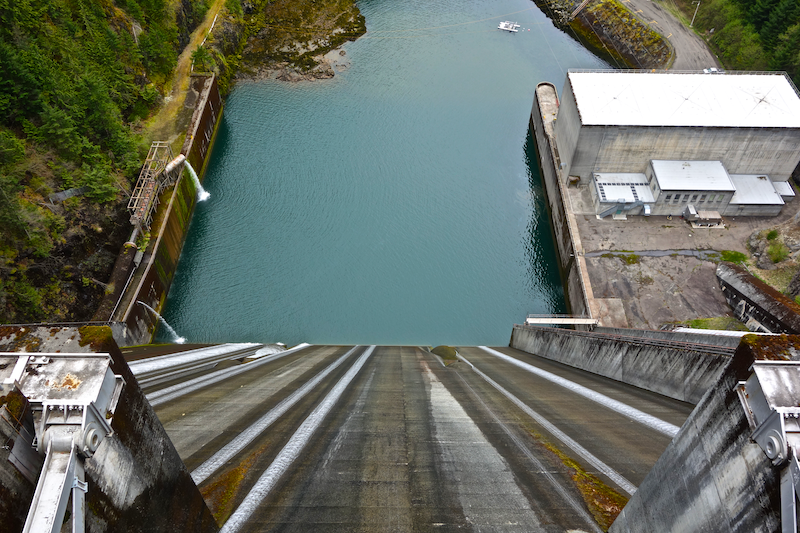
Threats to Wild Steelhead
A variety of factors have coalesced to contribute to the systemic decline of wild steelhead populations. Broadly speaking, these primary threats can be categorized as the Four H’s: Habitat, Harvest, Hydropower, and Hatcheries. Together, these four factors have been the primary culprits of steelhead decline over the last century, and they remain pernicious forces that we still combat today. Unfortunately, we now need to add a “Fifth H” to the mix - Heat - since climate change is posing a new and dangerous threat to wild steelhead throughout their range.
The Five H’s
Habitat Destruction
Steelhead require intact watersheds with healthy spawning and rearing habitat as well as stable sources of cold, clean water. However, in many places, human activities have dramatically compromised watershed habitat, rendering them less able to support healthy runs of wild steelhead. These human activities, which range from irresponsible logging and mining practices to large-scale land-clearing for agriculture and urbanization, have coalesced to destroy tremendous amounts of spawning and rearing habitat. Despite this substantial loss of habitat, wild steelhead still persist due to the resiliency of these amazing creatures and the efforts of groups like the Wild Steelhead Coalition to restore critical steelhead habitat.
Too Many Dead Steelhead
The impacts of overharvest are ruthlessly simple: If you take too many fish from a population, they will be unable to replace themselves, and the population will decline. Overharvest of wild steelhead dates back to the earliest days of commercial fishing in the Pacific Northwest. In more recent years, harvest from sport fishing was a major driver of steelhead decline, as anglers continued to harvest too many wild fish as populations declined. Fortunately, harvest has proven to be a problem where massive improvements have been made thanks in large part to the work of conservation-minded anglers and organizations such as the Wild Steelhead Coalition that have largely eliminated recreational harvest of wild steelhead.
Destructive Mitigation
Since the middle of the 20th century, hatcheries have been widely used in a misguided attempt to mitigate declining wild steelhead populations for sport and commercial fishermen. Unfortunately, the effort to offset the loss of wild steelhead with hatchery fish has actually been a major driver of wild steelhead decline since hatchery steelhead pose a genetic and ecological threat to their wild counterparts. This threat is manifested through increased competition for food and habitat, heightened predation, genetic degradation, and decreased spawning success. Hatcheries are also incredibly expensive to operate, and the WSC is working to convince public officials that these public resources would be better spent on habitat restoration, responsible fishery management, and dam removal.
Barriers to Recovery
Hydroelectric dams are a ubiquitous part of the Pacific Northwest landscape, but they impede steelhead migration and are a literal barrier to steelhead recovery. Throughout the native range of wild steelhead, hundreds of dams obstruct passage. In the Columbia system alone, more than half of the historic steelhead and salmon habitat has been lost to dam construction. While fish passage infrastructure exists at many dams, the changes to a watershed brought about by dam construction cannot be alleviated simply by passing fish above them or trucking them around. Fortunately, for the first time in American history dams are being removed faster than they are being constructed, a critical trend the Wild Steelhead Coalition is working to accelerate.
In Hot Water
A warming climate brings particular challenges to steelhead conservation and restoration. Wild steelhead already face many threats, and unfortunately climate change is exacerbating all of them. For example, warmer water in natal rivers as well as changes to rain and snowpack will make accessing clean, cold water more difficult. Additionally, climate change is presenting new threats like increasingly lethal marine conditions due to ocean acidification and novel events like the Pacific blob. In worst-case scenarios, it is reasonable to believe that some watersheds could lose their ability to support steelhead populations if they become too warm. As a result, guaranteeing passage to cold-water refuges, protecting headwater spawning habitat and summer stream flows, and removing dams that warm and slow rivers will only become more important in the future.





